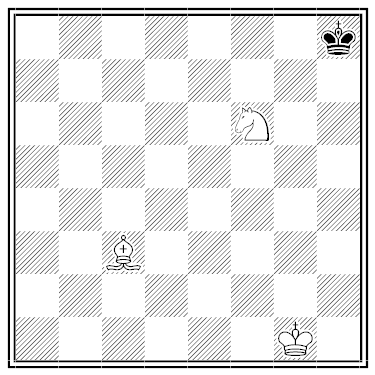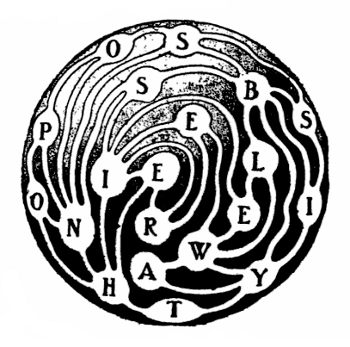Count these leprechauns:

Now swap the two upper panels and count again:

Where has the extra one been hiding?
Count these leprechauns:

Now swap the two upper panels and count again:

Where has the extra one been hiding?
This puzzling verse, from a contributor named “Maude,” appeared in the Weekly Wisconsin of Sept. 29, 1888:
Perhaps the solvers are inclined to hiss,
Curling their nose up at a con like this.
Like some much abler posers I would try
A rare, uncommon puzzle to supply.
A curious acrostic here you see
Rough hewn and inartistic tho’ it be;
Still it is well to have it understood,
I could not make it plainer, if I would.
(In the second line, “con” means “contribution.”)
What are the concealed words?
One of Eduard Gufeld’s first chess coaches, A.A. Olshansky, offered him this problem:

“White to mate in half a move.”
Census Taker: How old are your three daughters?
Mrs. Smith: The product of their ages is 36, and the sum of their ages is the address on our door here.
Census Taker: (after some figuring) I’m afraid I can’t determine their ages from that …
Mrs. Smith: My eldest daughter has red hair.
Census Taker: Oh, thanks, now I know.
How old are the three girls?

From Sam Loyd:
Here is a map of the newly discovered cities and waterways on our nearest neighbor planet, Mars. Start at the city marked T, at the south pole, and see if you can spell a complete English sentence by making a tour of all the cities, visiting each city only once, and returning to the starting point.
When this puzzle originally appeared in a magazine, more than fifty thousand readers reported, ‘There is no possible way.’ Yet it is a very simple puzzle.
I’ll withhold the answer.

A puzzle from Russia:
Draw two straight lines on the clock face so that the sums of the numbers in each part are equal.
Four missiles are located in the corners of a square 20 miles on each side. All are launched simultaneously, and each homes in on the one on its left at 1 mile per second. How much time will pass before they meet?
From Lewis Carroll’s first textbook in symbolic logic:
What conclusion can be drawn from these premises?

A bewildering riddle by the English statesman Charles James Fox (he of the widely spaced aunts):
I went to the Crimea; I stopped there, and I never went there, and I came back again. What am I?
Well, you’ve gone and murdered someone again. And this time you’ve done it in Elephantistan, which is renowned for its peculiar justice system.
The jury is divided, so you will decide your own fate. You’re presented with two urns, each of which contains 25 white balls and 25 black ones. Blindfolded, you must choose an urn at random and then draw a ball from it; a black ball means death, but a white one means you go free.
Tradition gives you the option to distribute the balls however you like between the two urns before you don the blindfold. This is thought to be a formality, as the total proportion of white balls to black does not change.
What should you do?